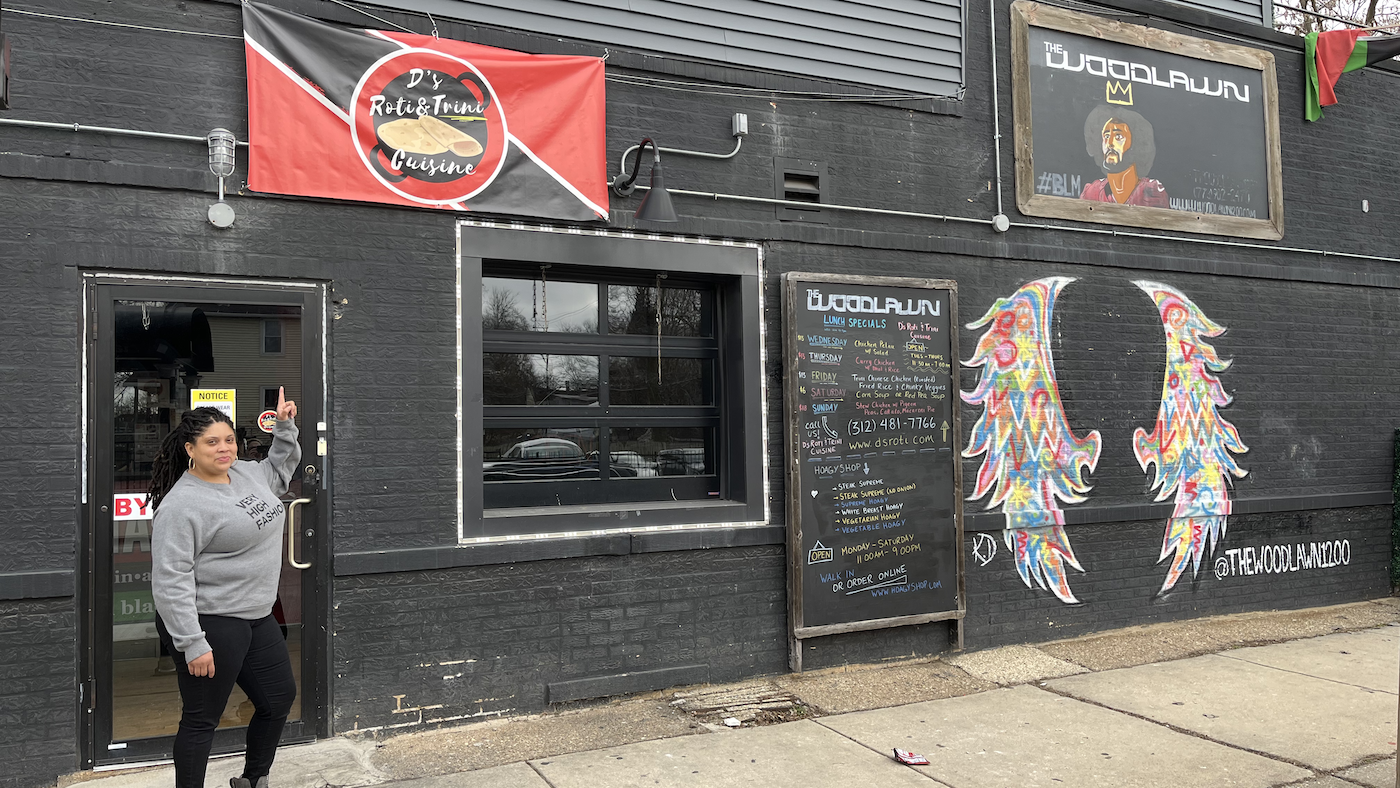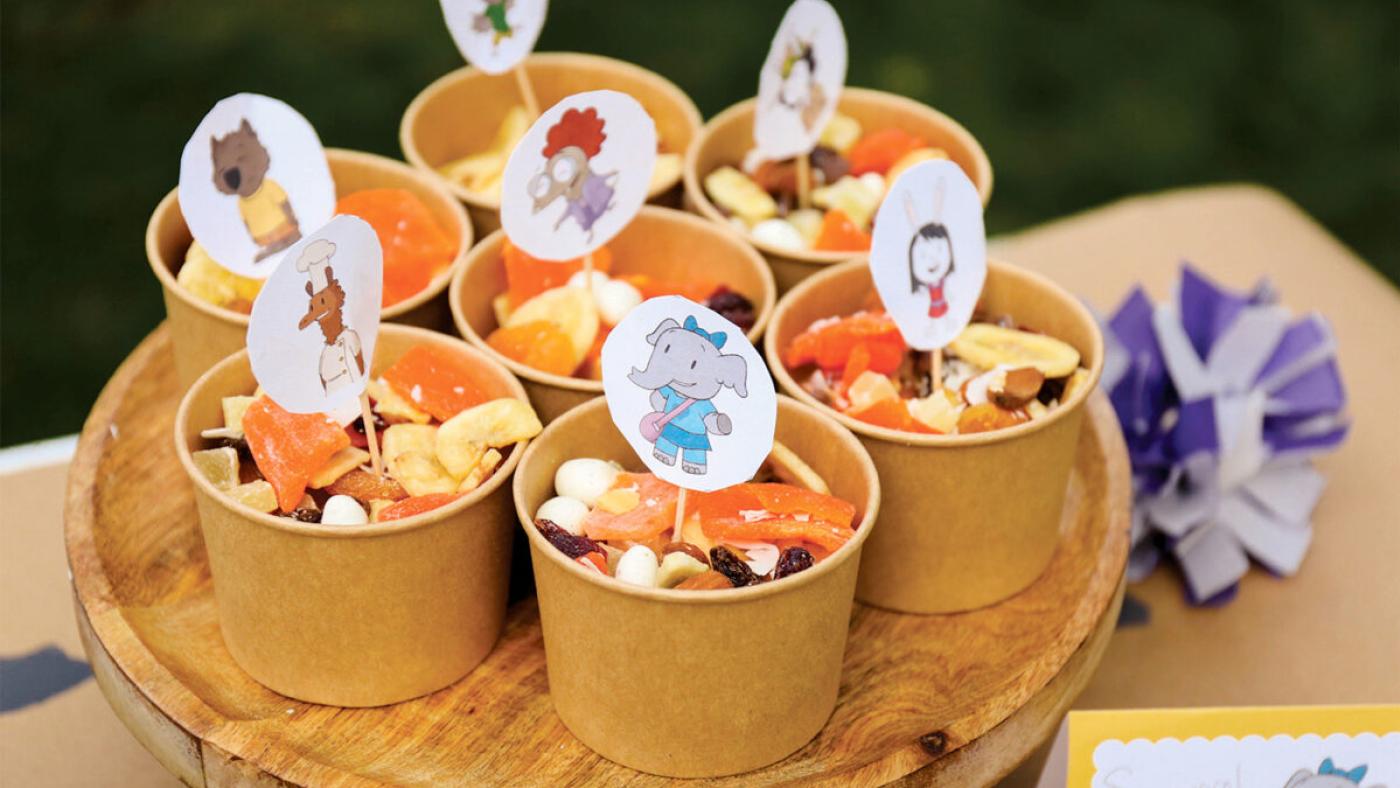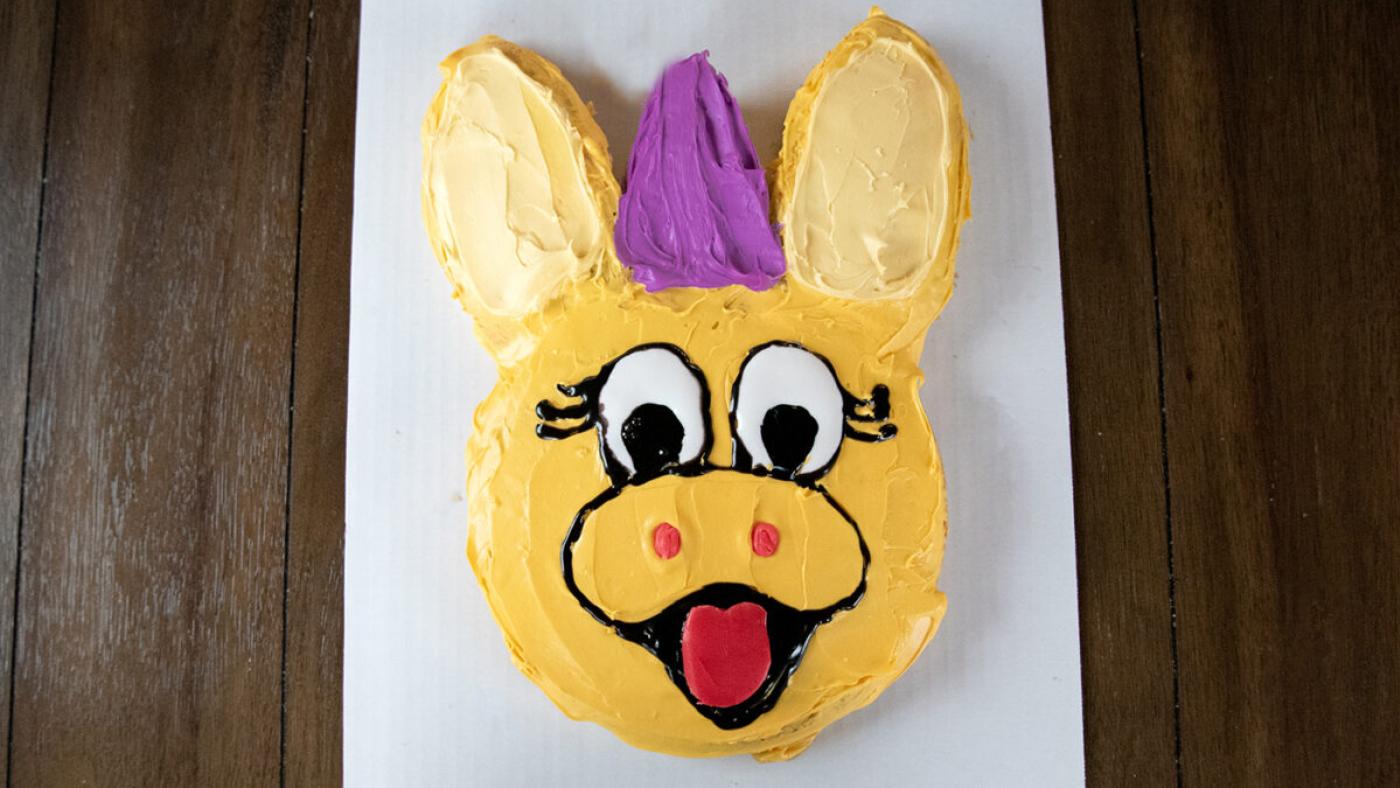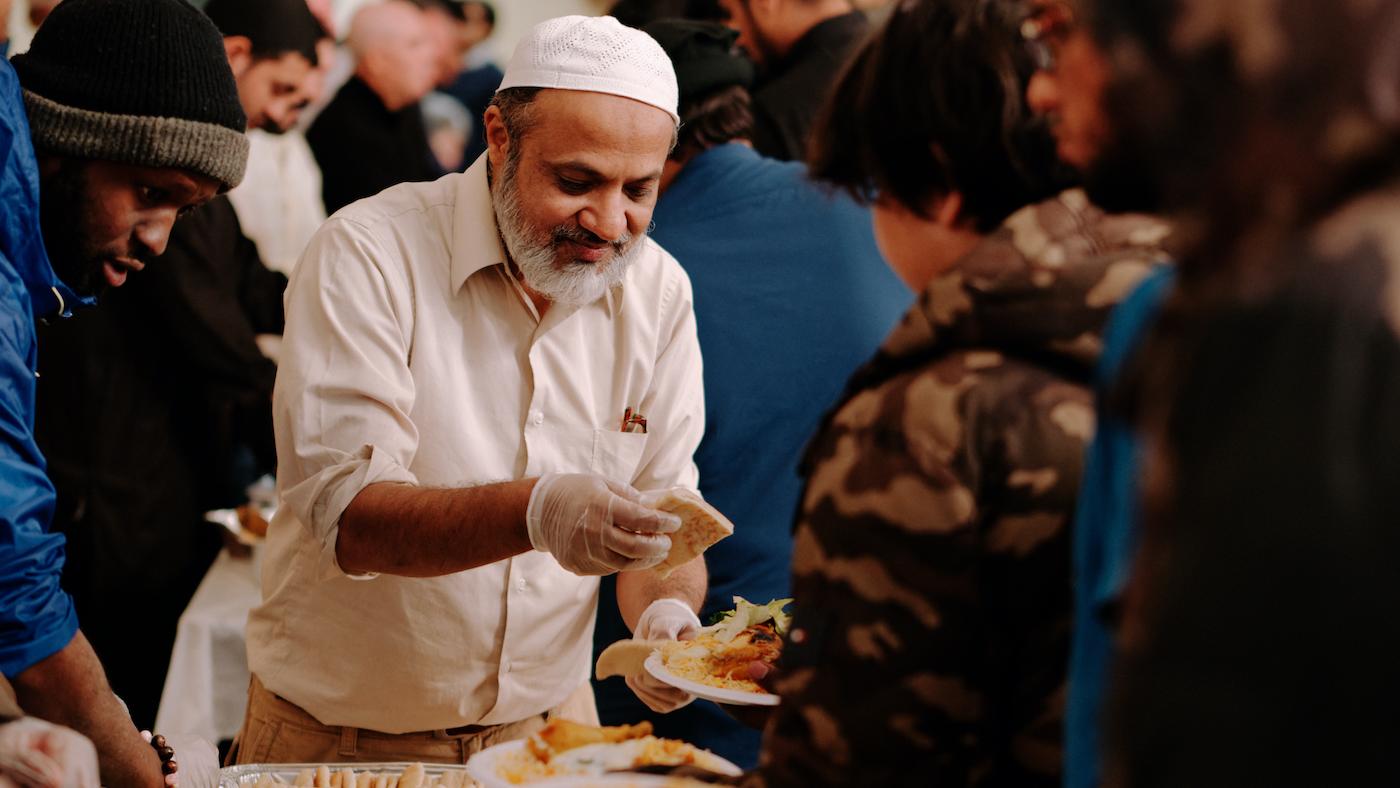Try a Rare-in-Chicago Cuisine that Combines Indian, African, Caribbean, and More Influences
Daniel Hautzinger
February 14, 2024
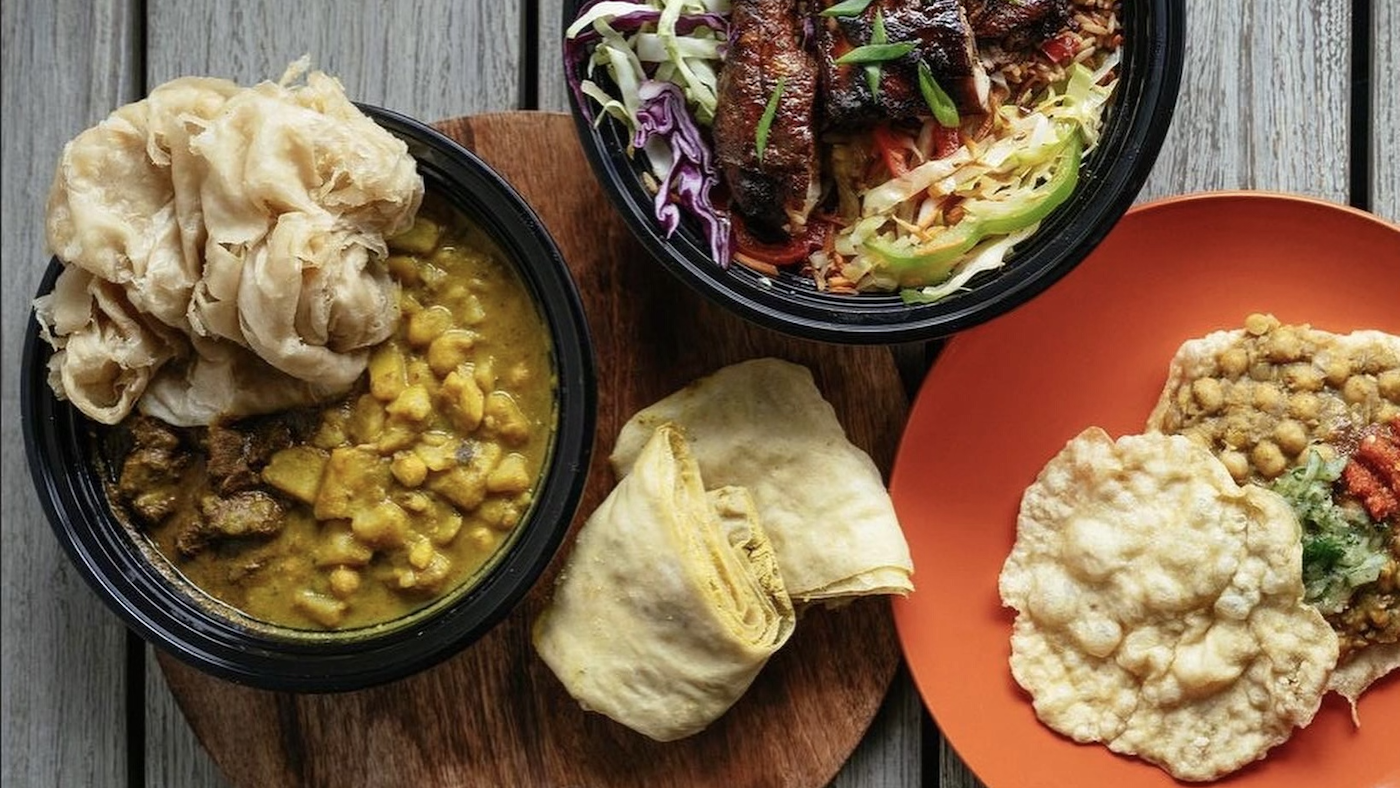
Get more recipes, food news, and stories by signing up for our Deep Dish newsletter.
At D’s Roti and Trini Cuisine, you can enjoy a dish that resembles a burrito, incorporates Indian flavors and names, is an iconic food of a Caribbean nation, and is made by an American. The Trinidadian roti is as unique as the multicultural island where it was created – and D’s Roti is one of only two restaurants in Chicago that serve it.
“When you bite into it, it’s so many levels,” says Dawn Lewis, the “D” of D’s Roti, which is located in Avalon Park. “You have the flatbread. You have the curry potato and chickpeas – channa. You have your curry meat.” Those flavorful fillings are folded into the split pea-stuffed bread to create a handheld wrap. “It’s like a dance in your mouth, honestly!”
That’s a fitting comparison for a country known for its joyous parties, particularly its Carnival celebrations at this time of year – calypso music and the steel drum originated in Trinidad and Tobago. It was while dancing at a party that Dawn and her now-husband Marvin started their relationship, and it was at concerts and dance clubs that they first started to sell Dawn’s food.
Around seven years ago, a Trinidadian musician gave a concert in the south suburb of Harvey, and the Lewises decided to make a bunch of roti and sell them outside the venue from their car. That’s part of the culture in Trinidad and Tobago, Dawn says. “It sold out, and everybody was like, ‘When are you doing it again?’ So it was like, okay, we have something here. That wasn’t the best roti I ever made, but it was a start.”
She and Marvin started pulling up outside the South Loop club the Bassline during its soca parties (soca is another Trini style of music) and selling out of food in ten minutes. “At every party everybody was like, ‘Where’s the roti lady?’” Dawn says.
She started selling her cooking from home and catering more, working for a time out of a ghost kitchen. Then last year she decided to quit her job with the Illinois Secretary of State’s office – she’s the warm, welcoming personality you hope to get when you visit the DMV – and start making roti and Trinidadian cuisine full time when she was offered the kitchen at the Woodlawn event space in Avalon Park. The brick and mortar D’s Roti and Trini Cuisine opened in fall of last year.
All the while, Dawn was improving her roti game through practice and research: watching videos, trying recipes, and putting her own spin on things. She’s not Trinidadian; she grew up in the south suburbs of Chicago. But she was exposed to the island’s vibrant culture through parties and food as a preteen because her best friend’s family was from there. She quickly fell in love with the culture and then, later, fell in love with a Trinidadian.
Marvin came to Chicago some twenty years ago to help out an aunt who had two young children and had gone through a divorce. He missed the food of his home country and would occasionally prepare it himself, although he never made roti or other breads. After he and Dawn got married, she started learning to cook it as well – and also began rolling out roti breads. Marvin “stopped cooking when he knew I could,” Dawn says with a laugh. He still does prep for the restaurant, making the zingy, salsa-like pineapple or cucumber chow, and is actively involved in other aspects of the business. His daughter also sometimes helps out in the kitchen.
“I watched how he did it, and his family, his mom, would give me little tips,” Dawn says.
It’s not an easy cuisine to learn, given the many culinary traditions from which it pulls. Although Trinidad and Tobago’s population is only half of Chicago’s, it has an extraordinary mix of demographics as a result of its history with colonialism. Indigenous people occupied Trinidad before Christopher Columbus landed there on his third voyage across the Atlantic in 1498, inaugurating an era of conquest and exploitation by various European nations, including the Spanish, Dutch, French, and British.
Those European colonizers brought African slaves to the island to work on sugarcane plantations. When slavery was abolished in most of the British Empire in 1833, the British began filling the plantations’ labor shortage created by the freeing of African slaves with indentured servants from China, Portugal, and especially India. Indians now make up the largest ethnic group on the island, with Africans a close second.
The Indian influence is particularly evident in Trinidadian cuisine. The roti flatbread, the tawa pan on which it is traditionally cooked, and the curry spices included in a roti wrap are all Indian in origin. Another version of roti known as “buss up shut” comes with a shredded paratha flatbread of Indian origin – it’s supposed to look like a “busted-up shirt” that you dip into a curried filling. Spinach is called bhaji, chickpeas channa, and stewed split peas dhal, among ingredients that take their names from India.
Doubles, another popular street food, is also a take on food from South Asia. Two flour flatbreads are fried and topped with chickpeas and various sauces or chutneys. It’s in those sauces that some of the native Caribbean flavors shine, such as the spicy relish kutchela (D’s Roti uses green apple instead of green mango in theirs) or shado beni (also spelled chadon beni, but pronounced “shadow benny”). The latter is the grassy herb known in America as culantro, which is often paired with garlic and hot pepper as a base for Trinidadian food: the “Trini-ty” of Trini cuisine.
There are plenty of other ingredients in the mix besides Indian. Pholourie are deep-fried split pea fritters similar to hush puppies, while macaroni pie is another dish that resembles Southern food. The spiced callaloo is African, with spinach, pumpkin, and okra cooked down into a stew in the version at D’s Roti. Trini Chinese chicken, typically served with fried rice, is an adaptation of East Asian dishes that combines five spice with the Trinidadian flavors. Bake, a deep-fried roll, is common in the Caribbean and is used to sandwich everything from saltfish (cod) to shark, a typical protein in Trinidad and Tobago – one that is unsurprisingly not available at D’s Roti.
The mix of influences makes the dishes accessible while still novel: most Americans who eat a variety of food will have reference points to keep them grounded while flavor combinations remain exciting and new. Even the two drinks made in-house at D’s Roti, featuring sorrel or hibiscus in one and mauby bark in the other call to mind other beverages: a more spiced, syrupier Mexican agua fresca for the former, and root beer if it actually still tasted like bitter bark and warming spice for the latter.
“Trinidadian food, if you love it, it hooks you quick,” says Dawn. She and Marvin will do their best to make you feel welcome in order to be hooked. “We started off catering parties or cooking in our backyard, and the restaurant is just an extension of that,” she says. “It’s an extension of home. We’ll come out and chat with you as you eat. We want it to feel like home.”

